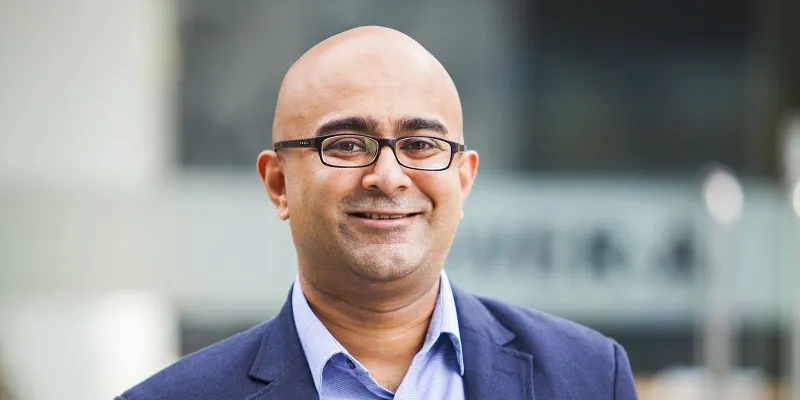What sets Loan Frame apart in the $300B Indian SME lending market
While the success of India’s demonetisation is being debated across both commercial and political corridors of power, there hasn’t been a better time for financial firms in the lending market. The surplus liquidity of cash in bank coffers has caused even banks to announce rate cuts on the loans provided.
And the signs could be seen before November 8. Just last year, Indian startups in the lending segment saw a massive draw of $343 million in investments, almost three times the $124 million that was seen in 2015. This includes a mixture of pure-play transaction platforms like LendingKart as well as NBFCs (Non-Banking Financial Companies) like IFMR Capital.

However, in spite of announcing rate cuts, banks aren’t lending at reduced rates, and the credit offtake in the country remains poor.
But for barely a year-old Loan Frame, the idea behind entering this segment was different. Shailesh Jacob, CEO and Co-founder of the company, says that India has close to 36 million Small, Medium and Micro Enterprises (SMEs) which contribute to roughly 45 percent of the country’s GDP (according to a report by MasterCard and the Confederation of All India Traders).
In India, institutional financing as far as small industries is concerned, stands at less than 10 percent of the total lending, leaving the rest of the demand to be satisfied by informal sources.
Even within institutional lending, formal lenders are further biased towards corporate lending, which constitutes more than 50 percent of the total bank lending. And in the scheme of things, SME lending remains fairly underserved, receiving only seven percent of the total lending from formal players.
A terminology called "High-Risk Perception" is one of the reasons given by banks for not lending to these SMEs.
Hence, this made a perfect proposition for the inception of Loan Frame, a B2B marketplace for SME loans, having a portfolio of 50 loan products for SME credit.
Thesis to product
Shailesh is joined in this endeavour by fellow Co-founders Rishi Arya (35) and Akshun Gulati (33), who earlier worked at an analytics-based financial research and advisory firm Copal Amba.
According to Shailesh, what the founders have created is a white product, which brings together borrowers (SMEs) and formal lenders, while doing the backend legwork to make the right match between the two through background checks.
Not a standalone institution, Loan Frame is only a captive supplier of credit to these SMEs.
The success of such transactional platforms in the SME credit lending space could be attributed to the cheaper interest rates offered by them to the borrowers.
Providing short term financing, Shailesh says,
The lending market in India is very opaque, and lenders are playing on asymmetry of information (including only ITR returns and bank statements). We have our own credit models, credit risk teams as well as algorithms providing the right level of transparency to the lenders. And because of this holistic approach and our understanding of the various risk perspectives for credit, we tend to lend to borrowers at a much lower risk.
The differentiator
But with deep-pocketed businesses like Capital Float (which received funding of $25 million in 2016), IFMR Capital (which raised funding of $75 million in two rounds), and Neo Growth (which saw funding of $35 million) infiltrating this space, what stands as a differentiator for a startup like Loan Frame?
The founders state that almost all of the well-funded players are NBFCs, meaning that they mostly lend their own capital. This rather works as a handicap for NBFCs, restricting them in terms of the size of loans and products.
Further, Shailesh claims that while these players are mostly focused on providing loans in the one to ten lakh bracket, Loan Frame can provide loans ranging from a few lakhs to up to Rs 50 crore.
On the other hand, on looking into the matter, we found that Capital Float claims to provide loans of up to Rs 1 crore in value.
Shailesh adds,
“On our platform, since we have a large number of lenders, the chances of getting a lender who can give you a loan, and the amount of loan you require, at a highly competitive rate is very high.”
Relying on partnerships
The second point of differentiation for the startup is their business strategy - driven towards areas and footprints of economic activity. This means that the firm is primarily targeting large corporate partnerships, for example, e-commerce firms that might already have a large SME base through its sellers and retailers on the platform. Hence, this not just gives SMEs quick access to credit but also helps Loan Frame gets its customers.
However, this isn’t new, and in the past, we have seen this strategy kick in with many NBFCs and transactional platforms like Capital Float, Neo-Growth, and Capital First tying up with Snapdeal, Flipkart, and eBay to provide loans to sellers.
Further, these tie-ups don’t just provide access to quick customers, but also transactional data that can be used further for the assessment of credit risks.
Not disclosing names, the founders claim that Loan Frame has close to 15-20 corporate partnerships at present, which also includes e-commerce majors.
Shailesh firmly sets aside the idea of ever looking at ground activations to increase its outreach to SMEs, and expects close to 50 percent of their business leads to come from these corporate tie-ups.

Stacking up metrics
Looking at metrics, the firm at present has:
- 10,000-15,000 SMEs on its platform
- 11-14 large-scale lenders on its platform
- Expects to achieve about Rs 1,000 crore of capital disbursement in the next two years
- Provides secure credit at interest rates between 9 percent and 12 percent, while providing unsecured credit at 16-20 percent
While not disclosing the number of transactions, the 30-member firm acknowledges taking a cut in each successful financing deployed as a part of their revenue. This broadly ranges between one percent and two percent of the transaction size, according to the founders.
Cash in coffers
In the past, Loan Frame had raised a seed round of $2.25 million led by Vedanta Capital, represented by Parag Saxena. Other investors in the round included Sanoch Management, represented by William Campbell, former Chairman of Visa International and former CEO of Citigroup, and Toos Daruvala, co-CEO of MIO Partners.
Looking into the future
The startup is also looking to introduce some exciting small business loan products next quarter that will allow customers to get instant funding.
Up to the end of this year, the big focus for the firm will continue to be an investment in their backend technology algorithms, as well as increasing their corporate partnership footprint. The firm, at present, is deploying 30-35 percent of its investments in technology.
In the next two years, Loan Frame will look to increase their SME customer base seven or eight fold to above 100,000 SMEs, while also getting 10-12 new lenders on-boarded to the platform.
The industry
As Shailesh rightly points out, for lending institutions, the cost of raising capital should also be considered. This cost can be close to 7 percent for large institutional lenders, while it stands at 11 percent for NBFCs. This might cause high interest rates to be levied on customers.
In the case of Loan Frame, it is just building a bridge between an SME and a lender.
However, one shouldn’t discount NBFCs in this equation. Considering that, recently, PM Narendra Modi announced incorporating NBFCs in the credit guarantee scheme for SMEs, leading to an extension of the amount of loan disbursement up to Rs 2 crore under the scheme, an upsurge in the accessibility to capital is likely to occur. Moreover, the scheme facilitates loans by providing banks with a government-backed guarantee for 75 percent of the facility value. This means that the government will cover that much of the amount in case an SME can’t repay the loan, and the SME will have to pay only 25 percent of the total loan amount.
Further, industry experts along with the founders tout the debt demand for SME in the country to be around $520 billion, with a further $130 billion of equity demand. Till last year, the market size for SME lending in India was claimed to be $300 billion, according to industry experts.







